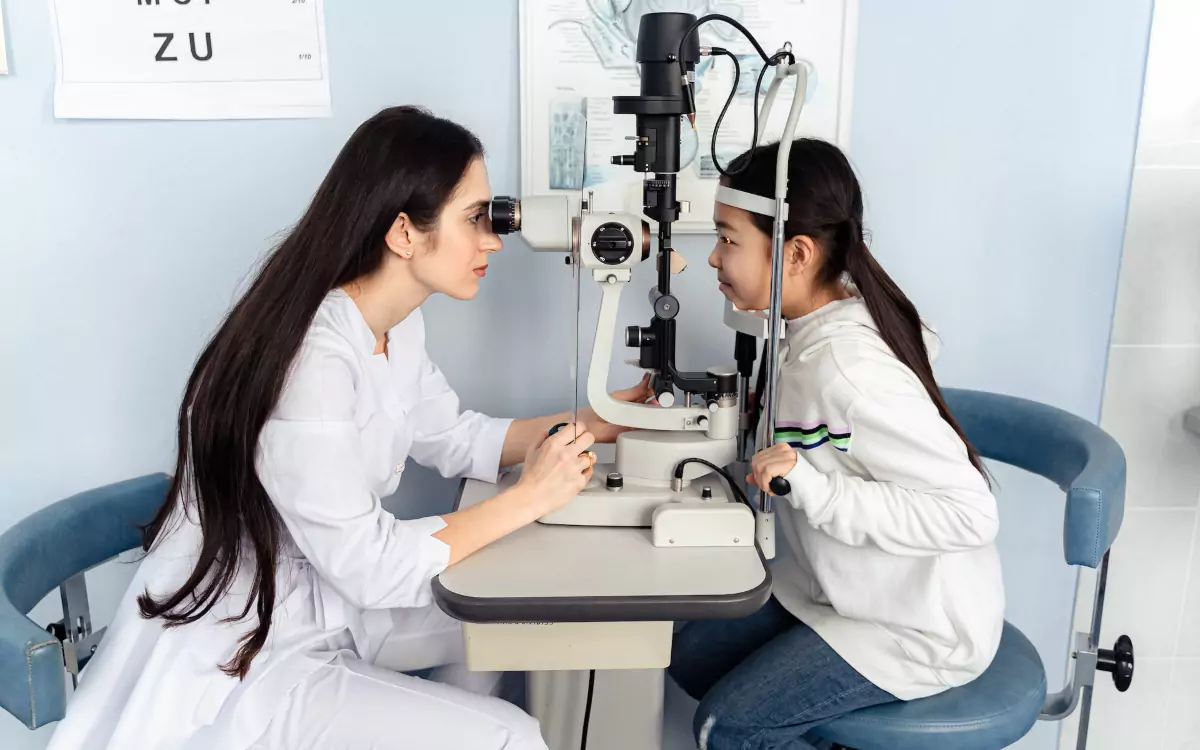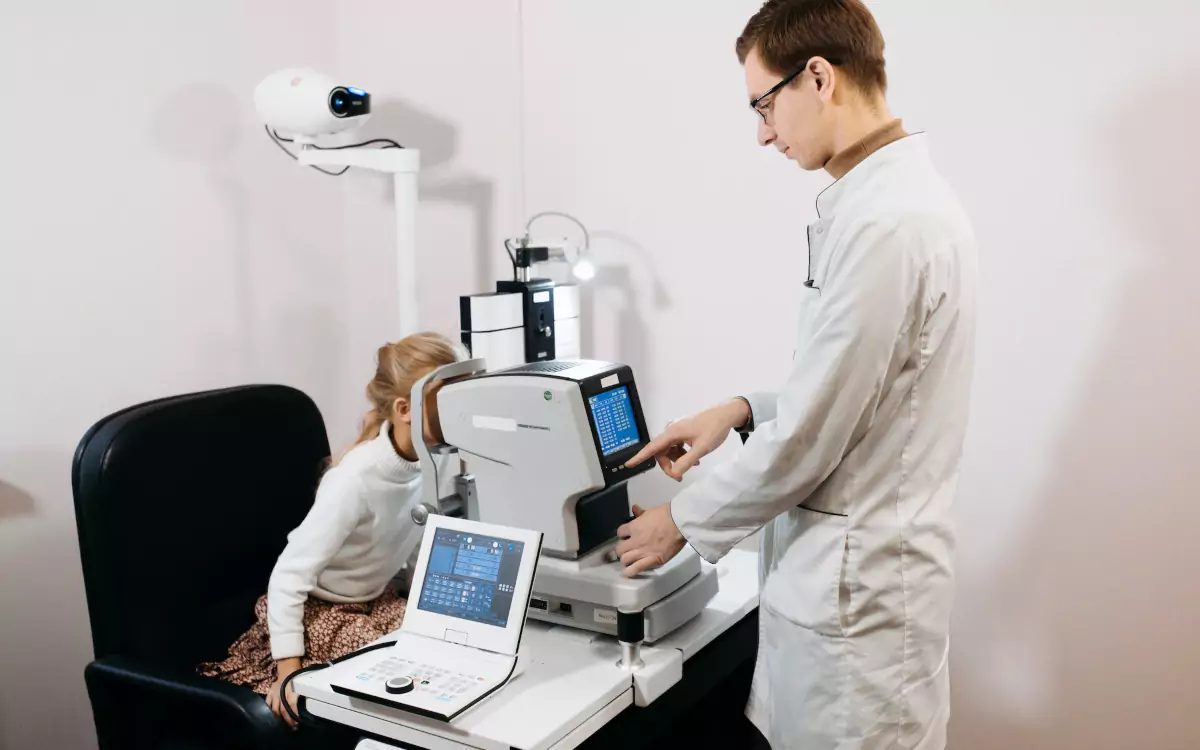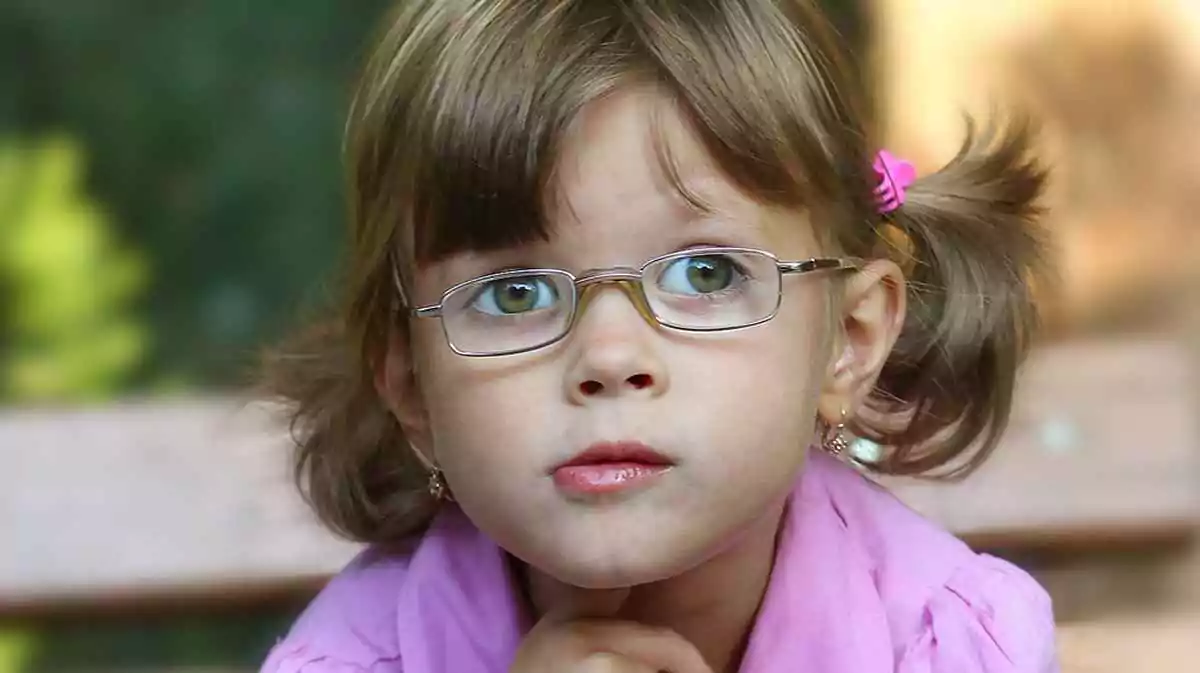What Does a Pediatric Ophthalmologist Do?
Is your child experiencing eye issues, leaving you wondering which type of doctor to consult?
That’s where a pediatric ophthalmologist can come in.
These specialized eye doctors are trained to diagnose and treat eye conditions in children.
Let’s explore how these dedicated professionals can help safeguard your child’s precious eyesight.
Who exactly are pediatric ophthalmologists?
Pediatric ophthalmologists are highly skilled doctors who diagnose and treat eye conditions in infants, children, and adolescents.
Unlike regular ophthalmologists who primarily treat adults, pediatric ophthalmologists possess in-depth knowledge of the developing eye and the specific challenges that arise during childhood.
Becoming one requires a rigorous educational journey.
After completing a four-year undergraduate degree, aspiring pediatric ophthalmologists must pursue four years of medical school and three years of residency to become general eye surgeons.
Then, they must undergo one year of fellowship to decide what type of eye surgery they will perform full-time.
One of the fellowship options is pediatric eye surgery.
What about pediatric ophthalmologist in the US ?
To practice as a pediatric ophthalmologist in the United States, one must meet the requirements of the American Association for Pediatric Ophthalmology and Strabismus (AAPOS).
This esteemed professional organization promotes excellence in pediatric eye care and ensures that pediatric ophthalmologists adhere to the highest standards of practice.
What eye examinations can a pediatric ophthalmologist provide?
Vision tests
A vital part of any pediatric ophthalmological examination is assessing a child’s visual acuity.
Visual acuity measures how clearly a person can see objects or letters.
This is often done using an eye chart to assess clarity of vision.
Pediatric ophthalmologists utilize age-appropriate methods such as eye charts or interactive games, to evaluate how well a child can see.
One example is the “Snellen E” chart, which features the letter “E” in different orientations that the child is asked to identify.
Another example is the “Fishing for Letters” game, where children use a virtual fishing rod to catch letters or shapes that appear underwater.
Refractive error assessments
Refractive errors such as myopia (nearsightedness) and astigmatism may be harder to detect in a child unless they get examined early.
With the help of optical instruments, pediatric ophthalmologists utilize various techniques to assess and correct these errors.
Retinoscopy and autorefraction are techniques used to assess a child’s eye prescription, while visual acuity testing measures their ability to see letters or shapes at different distances using eye charts or interactive games.
Motility examinations
Motility examinations focus on assessing the coordination and movement of the eyes.
Through visual observation and specialized tests, pediatric ophthalmologists can identify and manage issues affecting the child’s eye movements and coordination.
What treatments can a pediatric ophthalmologist provide?
Prescription of eyeglasses and contact lenses
Pediatric ophthalmologists can prescribe appropriate eyeglasses or contact lenses when a child’s vision requires correction due to refractive errors such as myopia or astigmatism.
Surgical procedures
Pediatric ophthalmologists are skilled in performing surgical interventions for various eye conditions in children.
These include surgery for blocked tear ducts and chalazia (eyelid cysts), cataract extractions, and correcting crossed eyes.
Amblyopia therapy
Amblyopia therapy, also known as lazy eye therapy, is a targeted treatment approach aimed at improving the vision and visual processing in the affected eye.
It involves exercises, occlusion therapy, and special eyeglasses or eye drops to strengthen the eye-brain connections.
Early intervention is crucial here, as one can take advantage of the brain’s remarkable adaptability during its early stages of development.
Prescription of medication
Pediatric ophthalmologists can prescribe medications to manage various eye conditions or diseases in children.
They may prescribe eye drops, ointments, oral medications, or other appropriate treatments.
What conditions can a pediatric ophthalmologist treat?
Pediatric cataracts
Cataracts, which is a clouding of the eye’s natural lens, can also occur in children.
Pediatric ophthalmologists can restore clear vision through surgical procedures, such as cataract extraction and lens implantation.
Blocked tear ducts
Blocked tear ducts can occur in infants, leading to excessive tearing, discharge, and potential infection.
Pediatric ophthalmologists can evaluate and manage blocked tear ducts, often through non-surgical interventions like massages or antibiotic eye drops.
In cases where the blockage persists or causes complications, surgical procedures may be recommended.
Strabismus
Strabismus is commonly known as crossed or misaligned eyes.
Pediatric ophthalmologists use various treatments tailored to the cause and severity of the condition, including vision therapy, eye exercises, eyeglasses, and surgical correction, to improve eye alignment.
Amblyopia
Commonly referred to as lazy eye, this condition occurs when the brain doesn’t fully recognize the visual input from one eye.
Pediatric ophthalmologists specializing in diagnosing and treating amblyopia employ various approaches like putting a patch over the stronger eye or using eye drops to encourage the weaker eye’s development.
Uveitis
Uveitis refers to the inflammation of the middle layer of the eye, known as the uvea.
Pediatric ophthalmologists may prescribe anti-inflammatory medications such as eye drops or oral medications, to reduce inflammation.
Signs your child should see a pediatric ophthalmologist
Increased sensitivity to light
Does your child seem particularly bothered by bright lights, or are they constantly squinting or shielding their eyes?
Increased sensitivity to light, known as photophobia, can indicate an underlying eye issue.
Watery or red eyes
If your child frequently experiences redness or excessive tearing in their eyes, it may indicate an eye condition in need of attention.
Excessive eye discharge
We’ve all encountered those sleep crusties in the corners of our eyes in the morning.
However, if your child constantly wakes up with excessive eye discharge, it may indicate an underlying issue.
Squinting
Have you noticed that your child frequently squints their eyes, especially when trying to focus on faraway objects or read things from a distance?
Squinting can be a sign that your child is experiencing difficulties with their vision.
Crossed eyes
If your child’s eyes are misaligned or crossing inward or outward, it’s essential to consult a pediatric ophthalmologist.
Crossed eyes, known as strabismus, can affect vision development and binocular vision.
Early intervention is crucial in treating strabismus and ensuring proper eye alignment for optimal vision and depth perception.
Tilting head to see
Does your child tilt their head to one side or turn it at an angle to see objects?
This head-tilting behavior may indicate a potential issue with eye alignment, visual acuity, or binocular vision.
Let your child grow up with healthy vision with help from a pediatric ophthalmologist
In a nutshell, pediatric ophthalmologists are the superheroes dedicated to protecting your child’s eyesight.
They specialize in diagnosing and treating various eye conditions unique to children, offering tailored care for optimal visual health.
By catching tell-tale signs such as sensitivity to light, watery or red eyes, eye discharge, squinting, crossed eyes, or head tilting early on, your pediatric ophthalmologist will be better able to treat and preserve your child’s eyes.
There’s always more to discover in the captivating world of eyes, eyewear, and eye care.
Before you go, be sure to check out Mouqy’s blog for more fascinating facts and tips!

Written by:
Angie Garcia














